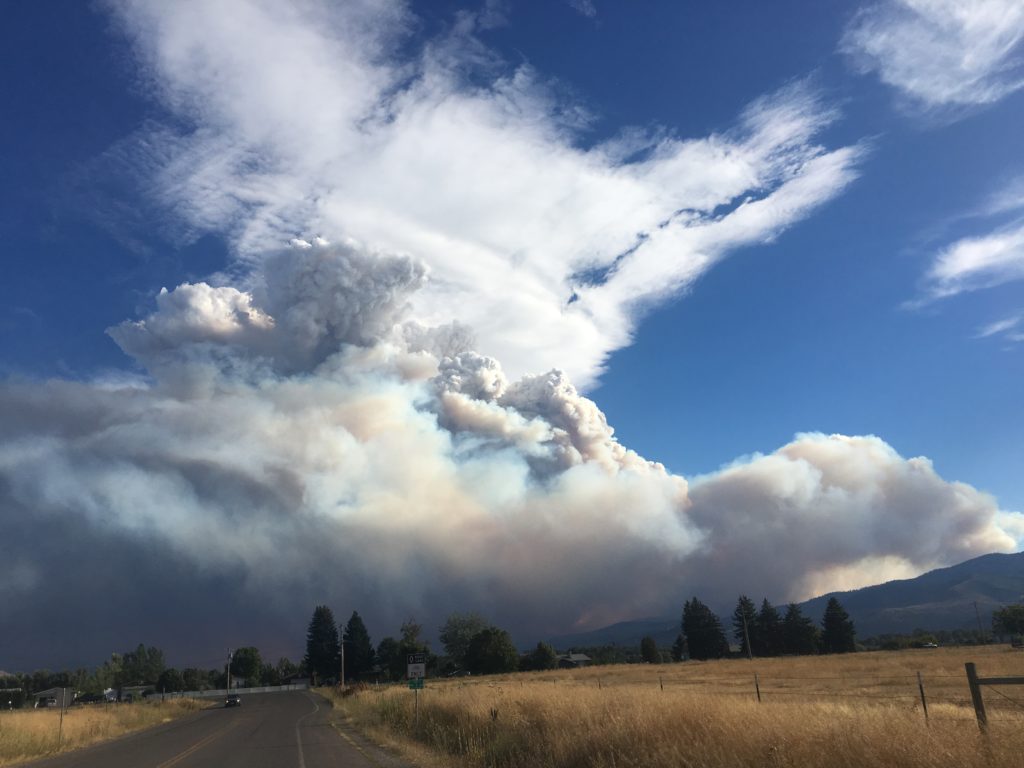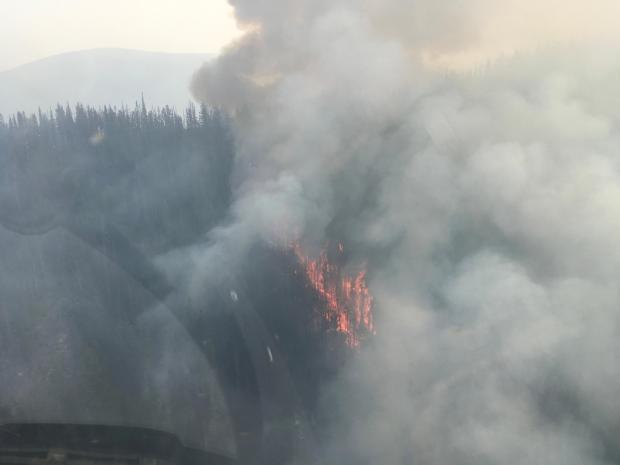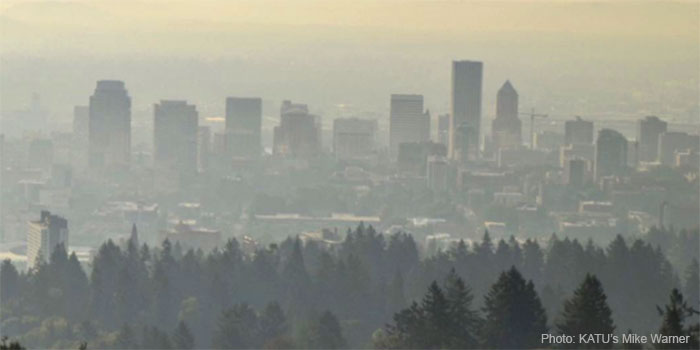
Are the 2017 wildfire season and its long, miserable, smoke-choked days the new normal?
University of Montana journalism professor Joe Eaton recently sat down with UM fire ecology professor Philip Higuera to explore the reasons why the West is burning up this summer.
The resulting Q&A, published Sept. 11 by City Lab, is a thoughtful look at the role of global warming, shorter-term climate events, and longtime forest and fire management policies on the severity of a wildfire season, this one being the case in point.
Higuera begins by reminding readers that there have been plenty of other notable, big-burning fire seasons in the not-so-distant past: 2012, in 2007, in 2000, and to an extent in 2003.
None have surpassed the devastation of 1910 in western Montana and northern Idaho.
“These rare events are what’s expected every once in a while,” he says.
But what’s going on this year?
Here’s Higuera’s take: “The main reason there is so much burning right now is the strong seasonal drought across the region. The term we use is that these fires are ‘climate enabled.’ The drought makes most of the vegetation, live or dead, receptive to burning. In Missoula, we had the driest July and August on record and the third-warmest July and August. With those types of conditions, we expect widespread burning. But people underestimate the role that seasonal climate plays in these events, and we start to grasp at lots of other things to explain it.
Eaton, who previously worked in Washington, D.C., and Roanoke, Va., asks about the failure of fire agencies to put out this year’s massive fires. Higuera not only tells him that’s impossible, but goes on to say full suppression is not even the goal – nor should it be.
“Most of these ecosystems that are burning have evolved with fire,” he says. “We expect them to burn. We need them to burn if we want them to continue to exist.”
“So it’s like trying to stop rain?” Eaton asks.
“It’s like trying to stop an earthquake. Trying to stop a volcano,” says Higuera. “To me, the goal can’t be to have no fire. That’s gotten us into trouble when we pursued that goal. I think the metric should be how much area has burned that we wanted to burn compared to how much burned that we didn’t want to burn.”
Later, Eaton asks about logging. Can logging fix the wildfire problem? Can the Forest Service prevent wildfires by logging larger acreages?
Says Higuera: “That is based on the assumption that fires are occurring because there is more fuel available to burn than in the past. That’s generally not what’s driving this. It’s the drought.”
The only way to eliminate fire would be to pave the forests, he says. Only then would there be no fire.

They talk about climate change, too, and its effect on individual wildfires. And about whether Westerners should live in the wildland-urban interface, and why insurance companies aren’t taking a larger leadership role in the prohibiting construction in the WIU.
It’s a fascinating read, and an essential one if you live anywhere in the U.S. – but absolutely if you live, and breathe, in the West.
Let us know your reaction to Higuero’s thoughts. Join the conversation on Treesource.


In my opinion as a forester, former wildland firefighter, and forestry instructor who taught wildland fire management and ecology classes for 12 years, Higuera gave good answers to the questions. I might have asked different questions to elicit additional details about the effectiveness of forest fuels treatments. In any case, he’s right: “…you can’t just let it burn. That would not be wise. It really comes down to what you can afford to burn and what do you want to protect. If the fire is in the wilderness, that’s great. If it’s burning toward a community, that’s not so good.”
In response to a question about logging, he says, “It’s true that if cut, there is less fuel in the forests. But in a lot of cases, there is what’s called slash—woody debris—left on the ground that will carry fire across the forest floor, which is what you need for it to spread.”
Yes, but — and it’s a big but — logging and associated fuels treatments DO have a significant effect on fire behavior. In many cases, a fire in slash is going to be much less intense than a fire before the many tons of fuel are removed. I’d like to get Higuera’s insights into the before/after treatments here:
https://csfs.colostate.edu/districts/woodland-park-district/woodland-park-forest-management-stewardship/
The photo at the top of the page scrolls through three before/after fuels treatment scenes. Fire might burn in any of the treated areas, but it would spread slowly and burn with far less intensity than a fire in the “before” areas. If you show people photos like this, they get it — it’s a simple concept: less fuel equals a decreased chance of a large, intense wildfire.